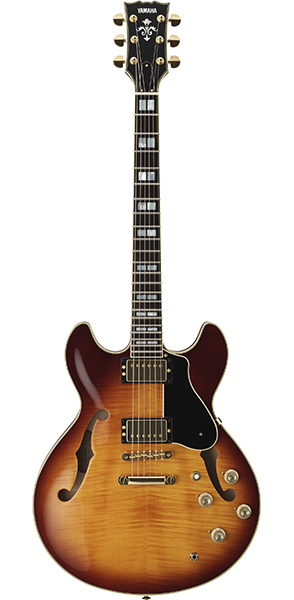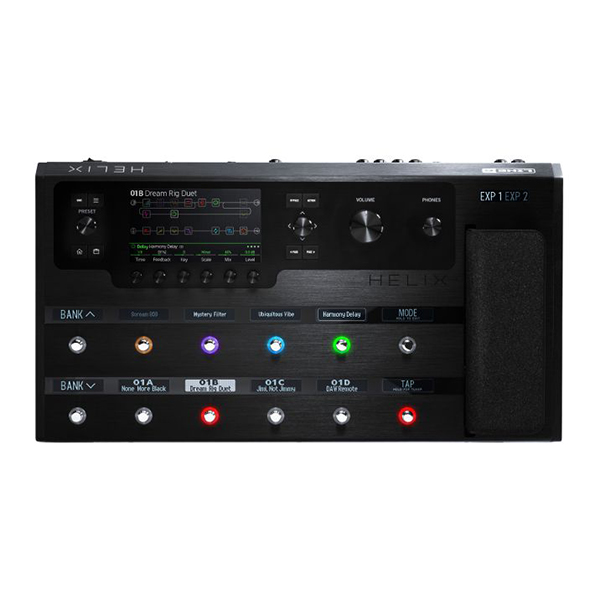This month we’re going to be jamming over a C Lydian progression. We’ll be using a simple, but unique approach to outline that modality, perhaps one you’d never thought of.
The rhythmic approach to the chord progression features several “pushes” (upbeat anticipations) and a cool double-stop embellishment … so it’s well worth learning the chord sequence too.
Let’s take a look at the chord progression first, and get a visual breakdown of why we are looking at a Lydian tonality.
The Chord Progression
This month’s four-bar chord sequence contains three chords;
IV III II
Cma7 – Bmi7 – Ami9
II: Cma7 Bmi7 I Bmi7 I Cma7 Bmi7 Ami9 I Ami9 :II
The Harmonized G Major Scale / Seventh Chords
I II III IV V VI VII
Gma7 – Ami7 – Bmi7 – Cma7 – D7 – Emi7 – F#mi7(b5)
We can see from the breakdown that the progression starts on the fourth chord of the G Major scale, Cma7. The first chord in a progression, often indicates the tonal center of that progression.
Lydian Modal Tonality
Now let’s lay out the G major Scale (I), and the C Lydian Mode (IV) to see what intervals we get when starting the scale on the fourth degree.
P4
G – A – B – C – D – E – F# – G
#4
C- D – E – F# – G – A – B – C
The fourth degree of the G Major scale is a perfect fourth Interval. When we start the G Major scale on the fourth degree, C, the fourth degree from that tone is an augmented fourth (F#), or commonly known as a sharp fourth #4 / #11. (A #11 is enharmonic to #4, only it sounds an octave above.)
The #4 / #11 is the characteristic note of the Lydian mode, and we can use this note to really color the melodies, licks and lines we play to great effect.
Scale Choices
So what scale, or scales would be a good choice for this jam session?
Well, obviously we could use the G Major Scale, targeting tones of the Cma7 chord, and that sweet #4 (F#). C Lydian.
But what about using something less expected, like B Minor Pentatonic?
Using the B minor Pentatonic scale will allow us to use our favorite Minor Pentatonic licks, and patterns, and give us the characteristic note without breaking a sweat looking for it.
Let’s analyze the scale against the Cma7 chord tones.
I Ma3. P5. Ma7
Cma7 = C – E – G – B
Ma7 Ma9 Ma3 #4 Ma6
B Minor Pentatonic = B – D – E – F# – A
We can see that the B Minor Pentatonic scale gives us the Ma7, Ma3 chord tones, the augmented 4th characteristic note of Lydian, and two chord extensions … the major ninth and major sixth.
There are safer sounding choices, but I think you’ll like how this approach opens up your sound from the typical Pentatonic licks.
The Solo Protocol
You’ll notice four main protocols to my soloing approach this month. Try applying these techniques and phrasing protocols for yourself.
- All eight phrases start on the downbeat of two.
- I’m using a percussive “rake” across the strings to start each line.
- I’m purposely targeting the characteristic note F# (#4) at the beginning of each phrase.
4. Copying the first part of the phrase again for the second half of the four-bar phrases.
As always, stay within the spaces I’ve left for you and you’ll see a massive improvement in your phrasing chops.
O.k., let’s get down to business and jam.
Robbie Calvo – https://www.tradinglicks.pro
__________________________________________________________________
Gear Used – Yamaha SA2200 – Line 6 Helix Rack.
Tonal Center Modality – C Lydian
Scale Used – B Minor Pentatonic
Tempo – 90 BPM



